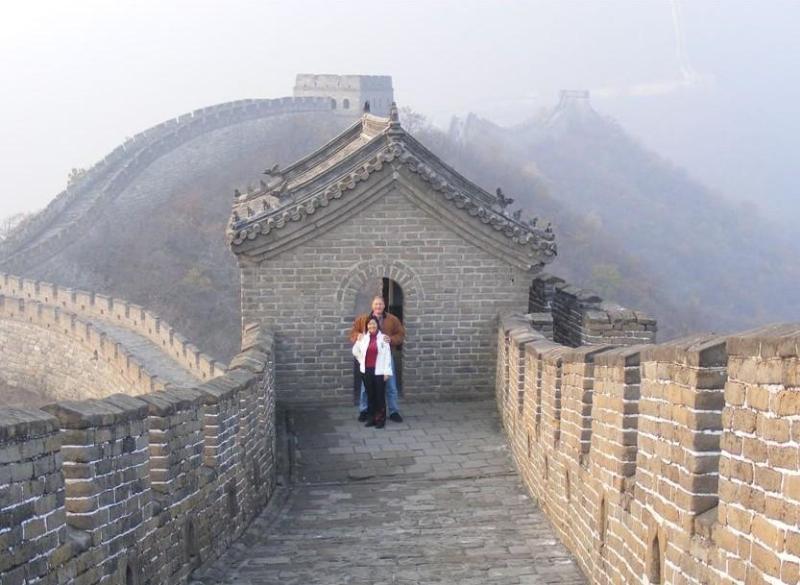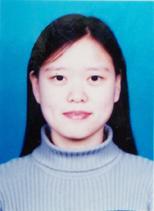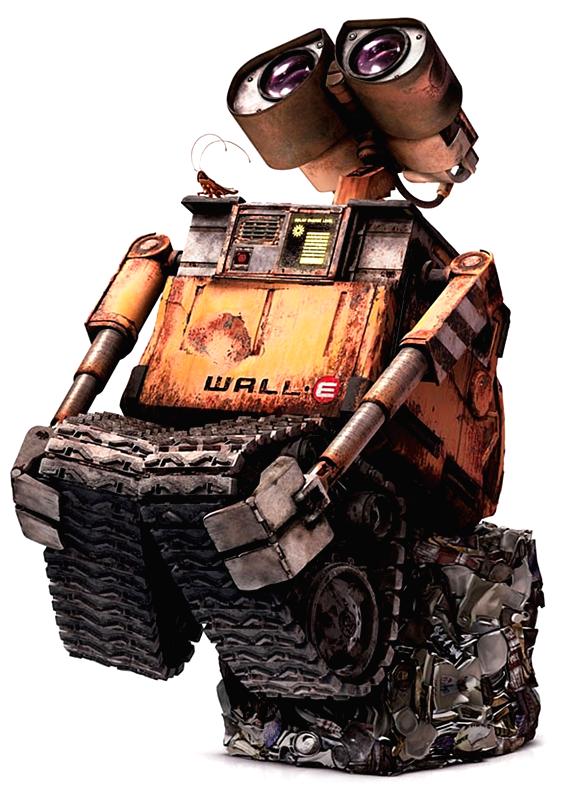| Terracotta Warriors. Fake? | |
|---|---|
| Apr 13, 2006 01:56 | |
 | Found this article. What do you guys think of these claims? Appreciate your feedback. Thanks. The whole Terracotta Warriors thing looks a bit like a set up. A lot like the “you can see the Great Wall of China from Outer Space” claim. The story goes that some farmers were digging a new well and low and behold, they found an army of pottery soldiers. Officials came in, semi excavated the site, put a roof over the top and left the excavating equipment laying around with reassurances there are still thousands yet undiscovered, and they are still working to dig more out. That was thirty plus years ago. If there was more to find, I reckon the Chinese would have unearthed them by now. The have not. No soil has been removed from the site for twenty years, but the equipment is still there, as is the promise "we are still working on it." I reckon that is because there are no more. Perhaps the Pottery War Hero’s really are from 2000 years ago. Story has it that Qin Shihuang originally asked for 4000 teens to be buried alive to join him in the afterlife and had to be talked to accepting Terracotta solders as a compromise. That part of the story sounds about right. But the claim that there are hundreds more warriors and Qin Shihuang tomb, alleged to be full of untold treasures surrounded by rivers of mercury, still to be located in the surrounding areas, that sound a bit untrue. If authorities believed there was millions in treasure to discover they would do everything to unearth them. They have 1.3 billion people at their disposal. If they want something done they do it. Look at the thousands that die in mines every year, safety of the lower class is not a concern. If the tombs exist the Chinese would have uncovered them. They’d unveil them, stand back, and proudly pound their chest boasting “look at our clever ancestors.” Some little mercury rivers would never get in the way of that. |
| Apr 13, 2006 03:01 | |
 | 再见!!! |
| Apr 13, 2006 03:09 | |
 | Actually, our ancestors are far cleverer beyond our imagination. We are very careful about further excavation because we do not know how to protect the unearthed against oxidization. Look at the Terracotta Warriors now in exhibition. They are gray, without any colors. Too many such things happened. |
| Apr 13, 2006 03:11 | |
 | Roger, your comment did make sense to me, hiahiahia~ |
| Apr 13, 2006 03:15 | |
 | Haha,the same to you,guys!!! |
| Apr 13, 2006 03:22 | |
 | Yes, we do have 1.3 billion ppl. But do u think all of us are archaeologist?? Yes, that was thirty plus years ago. But do u think it's a long time?? Since all the treasures have been buried for more than 2000 years, why not 30 or even 60 years?? If we didn't found the terra cotta warriors by chance, we will never unearth them in purpose. It's still a long way to go to resist the oxidization and we need more time. If we just unearth all the culture relics NOW, we will surely regret in the future. By the way, there are much more treasures buried in China, not only the warriors. Maybe we can unearth all of them when there are 1.3 billion archaeologist! LoL LoL |
| Apr 13, 2006 03:56 | |
 | Authentication of The Terra Cotta Warriors and Horses In the Shaanzxi province, the Terra Cotta Warriors are the archaeological find of the 20th century. It is the mausoleum of the first Chinese emperor Qin Shi Huang, who was buried with a wealth of artifacts and treasures. The site now was turned into a museum and is a must on any serious tourist's itinerary. Featuring life size terra cotta figures of ancient warriors and other artifacts that have been scientifically authenticated as belonging to the Qin dynasty are on breathtaking display. Fieldwork in the Qin Shihuang Mausoleum is a good example of a multidisciplinary scientific approach to archaeology. Located in Xi'an in Shaanxi Province this massive mausoleum is the tomb of Qin Shihuang (259-210 BC) the first emperor of the Qin Dynasty. During the 1970s and 1980s remote sensing probed the mysteries of his burial. It had lain undisturbed for over 2,000 years. In the 1980s aerial photography established the location of the double walls of the mausoleum and the disposition of the famous formations of terra cotta warriors and horses. Researchers turned to an interdisciplinary approach when excavating the terra cotta warriors and horses. For example they combined geological methods with digital technology to collect and process data on the air and soil. These data have contributed to research into the changing climate and environment from the Spring and Autumn Period (770-476 BC) through to the Qin (221-206 BC) and Han Dynasties (206 BC-AD 220). |
| Apr 13, 2006 04:00 | |
 | Did astronaut Neil Armstrong landed on the moon in 1969? Up till today, many people believed that USA fake the moon landing. They said the moon landing was made in Hollywood. By George Lucas? |
| Apr 13, 2006 06:15 | |
 | Bravo EXPATBRAT ! You signed up today and posted your first topic for discussion. The comment in Chinese 再见!!! [goodbye] by ROGERINCA is totally uncalled for.You have a right to be here as much as anyone else. Keep posting!!!! |
| Apr 13, 2006 06:31 | |
 | What do you guys think of this article found at www.china.org.cn/english/features/Archaeology/ ? Scientific Advances in Archaeology Modern scientific methods have been pushing back the boundaries of archaeology in China. As early as the 1950s, foreign researchers were turning to carbon-14 dating. China\'s first radiocarbon laboratory was built in 1965 for the Institute of Archaeology operating under the Chinese Academy of Sciences. The years that followed would see the number of such facilities mushroom nationwide. Carbon-dating occupies an indispensable place in China\'s prehistoric archaeology and has a key role to play in the study of artifacts left by ancient peoples. Without this technique we would know so much less about the remote and mysterious world of the \"Three Dynasties\" of the Xia (c.2100-1600 BC), Shang (c.1600-1100 BC) and Zhou dynasties (c.1100-256 BC). Other new techniques which can look even further back in time have been introduced one after another including thermoluminescence, paleogeomagnetism, fossil dating based on fluorine content or the decay of uranium 235, investigation using the accelerator mass spectrometer and so on. |
| Apr 13, 2006 06:34 | |
 | Deployed alongside traditional archaeological, these dating methods not only bring increased accuracy but they do so without damaging the often fragile cultural relics. Digital technology has also been brought into play to support field excavation. For instance, ICT (Information and Communications Technology) has been harnessed to assist in the work of heritage protection in the Yangtze\'s Three Gorges area. This has greatly reduced both the cost and the time necessary for the fieldwork and has helped find dozens of previously undiscovered ancient tombs in the reservoir area. Aerial photography has made it possible for archaeologists to look down on the layout of an ancient city or the arrangement of the graves in an ancient burial ground. It was in the 1960s that Chinese experts first used aerial photography in the archaeological rescue operations in the Sanmen Gorge reservoir area on the Yellow River. Since then it has been successfully employed in the excavation of the 2,400-year-old tomb of Marquis Yi of the Warring States Period (475-221 BC) in Hubei Province and also in that of the 700-year-old Yuan Dynasty (1279-1368) Shangdu city site in Inner Mongolia. Archaeology acquired remote sensing techniques back in the 1970s. Since the early 1980s a number of remote sensing facilities have been established in China. The resulting finds have included foundations and graves of the Yin Dynasty (the later period of the Shang Dynasty) in Yinxu located in Anyang City, Henan Province. The technique has also helped detect evidence of the neolithic Hongshan culture. It revealed the Heicheng city site of the Tangut Dynasty (1038-1227) and the Great Wall of the Kin Dynasty (1115-1234). These examples are all situated in Inner Mongolia. In fact, careful analysis of remote sensing satellite images can be credited with many important discoveries across China including: over 12,000 Paleolithic sites in the middle and lower reaches of the Yangtze River 2,000-year-old remains of the Jingjue Kingdom in the hinterland of the Taklamakan Desert traces of the Grand Canal built by Emperor Yang (560-618) of the Sui Dynasty the 1,000 kilometer Great Wall constructed by Genghis Khan (1162-1227), who founded the vast Mongol empire of the Middle Ages |
Page 1 of 2 < Previous Next > Page:
Post a Reply to: Terracotta Warriors. Fake?











 Copyright © 1998-2025 All rights reserved.
Copyright © 1998-2025 All rights reserved.